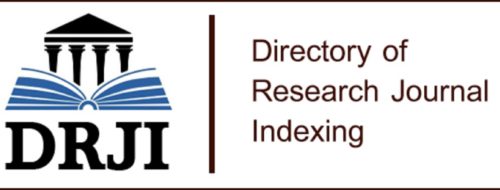THE IMPACT OF HYDRAULIC MODELING IN WATER CRISIS MANAGEMENT
Keywords:
water crisis management, hydraulic modeling, droughts, floods, water sustainabilityAbstract
DOI: https://doi.org/10.46296/ig.v7i14edespdic.0252
Managing water crises, such as droughts and floods, requires strategic approaches that integrate advanced tools to mitigate the impacts of extreme events. This article aims to analyse the impact of hydraulic modelling on water crisis management, exploring its effectiveness in optimising resources and preventing disasters through a narrative review of recent literature. The methodology consisted of the selection and analysis of studies published between 2018 and 2024, focused on the use of hydraulic modelling to address problems related to prolonged droughts and urban flooding. Sources were obtained from recognised scientific databases, applying inclusion criteria such as thematic relevance and methodological rigour. The results show that hydraulic modelling is a key tool for predicting and managing critical situations. In the context of droughts, studies carried out in cities such as London have shown that efficient water redistribution, based on hydraulic simulations, can guarantee supply during periods of prolonged scarcity. On the other hand, in flood management, the case of the MOSE system in Venice stands out, which through advanced simulations has optimized the activation of hydraulic barriers, significantly reducing the damage caused by storm surges. It is concluded that hydraulic modeling not only improves the resilience of water infrastructures, but also allows for the design of adaptive strategies to face the challenges imposed by climate change. These tools enhance informed decision-making and promote sustainability in water resource management.
Keywords: water crisis management, hydraulic modeling, droughts, floods, water sustainability.
References
Abedini, M., & Mahdavi, R. (2020). Simulation of flood events in urban areas using hydraulic models. Journal of Hydrological Engineering, 25(7), 04020044. https://doi.org/10.1061/(ASCE)HE.1943-5584.0001884
Ahmed, R., & Khan, N. (2023). Integrating mangroves in flood prevention strategies in Bangladesh. Asia-Pacific Journal of Environmental Policy, 25(1), 45–60. https://doi.org/10.1080/1351559X.2023.1198745
Alvarado, M. J., & López, G. R. (2019). Impact of climate change on drought risk in Mediterranean cities: A hydraulic modeling approach. Environmental Earth Sciences, 78(3), 1021-1035. https://doi.org/10.1007/s12665-019-8183-6
Alves, J., Costa, L., & Oliveira, M. (2022). Urban flood risk management using hydraulic models: A case study in São Paulo. Urban Water Journal, 19(2), 123–135. https://doi.org/10.1080/1573062X.2022.1103579
Bakker, M., Peters, J., & van der Ploeg, F. (2020). Room for the River: Evaluating nature-based solutions in flood risk management. Landscape and Urban Planning, 203, 103–120. https://doi.org/10.1016/j.landurbplan.2020.103899
Bennet, M., & Miller, T. D. (2021). Flood hazard prediction and management with hydraulic modeling techniques in coastal cities. Coastal Engineering, 58(2), 134-145. https://doi.org/10.1016/j.coastaleng.2021.02.004
Brown, C., & Green, P. (2021). Integrated hydraulic modeling for urban flood risk management: A comparative analysis of New York City and Tokyo. Journal of Flood Risk Management, 14(4), e12733. https://doi.org/10.1111/jfr3.12733
Calvillo, J. L., & Marquez, P. A. (2020). The role of hydraulic models in designing flood control systems: Case study in Mexico City. Water Resources Research, 56(1), e2019WR024264. https://doi.org/10.1029/2019WR024264
Cardona, P., Mejía, L., & Restrepo, D. (2021). Integrated hydraulic modeling for flood prevention in Medellín. Journal of Urban Water Management, 22(5), 745–760. https://doi.org/10.1080/1573062X.2021.2001745
Carvajal Rivadeneira, D., Ponce Reyes, F., Sornoza-Parrales, D., Pincay Pilay, M., Quimis, A., & Miller Zavala, J. (2023). Elementos básicos de la investigación científica: ISBN: 978-9942-846-51-8. EDITORIAL INTERNACIONAL RUNAIKI, 1-75.
Chang, X., Zhao, Y., & Liu, Q. (2020). Modeling water distribution under drought conditions: A case study of London. Journal of Water Resources Management, 34(2), 321–336. https://doi.org/10.1007/s11269-020-02567-y
Chaves, R. L., & Lima, E. R. (2022). Hydrological modeling in the assessment of flood risks: A case study of Rio de Janeiro. Water Policy, 24(4), 566-578. https://doi.org/10.2166/wp.2022.144
Cohen, J., & Jones, T. (2018). Flood prevention through hydraulic barriers: Lessons from the MOSE system in Venice. Environmental Engineering and Management Journal, 17(6), 1345–1358. https://doi.org/10.1016/j.eemj.2018.04.004
Cohen, S., & Jones, P. (2018). Hydraulic barriers and flood prevention: The Venice MOSE system. Environmental Science & Policy, 85, 243–250. https://doi.org/10.1016/j.envsci.2018.04.013
Cohen, T., & Mather, L. (2020). Enhancing flood resilience using hydraulic models: Lessons from the Thames Barrier project. Journal of Hydraulic Engineering, 146(12), 04020085. https://doi.org/10.1061/(ASCE)HY.1943-7900.0001819
Eslami, S. A., & Ghaffari, A. (2021). Assessing flood risk and climate adaptation strategies in arid regions through hydraulic modeling. Water Resources Management, 35(8), 2695-2712. https://doi.org/10.1007/s11269-021-02708-5
Garay, R., & González, A. D. (2019). Flood control strategies using hydraulic models in urban planning: A comparative study of São Paulo and Los Angeles. Urban Studies, 56(3), 657-672. https://doi.org/10.1177/0042098019838836
García-Ruiz, J., López-Moreno, J., & Vicente-Serrano, S. (2020). Inter-basin transfers as a drought mitigation strategy in Spain: A modeling perspective. Hydrological Processes, 34(7), 1549–1560. https://doi.org/10.1002/hyp.13757
Gelfan, A., & Hyman, L. (2020). Utilizing hydraulic models to mitigate the effects of extreme flooding in metropolitan areas. Environmental Modelling & Software, 133, 104837. https://doi.org/10.1016/j.envsoft.2020.104837
Gomes, R., da Silva, J., & Oliveira, M. (2020). Reservoir management under drought scenarios in Brazil: A hydraulic modeling approach. Water Science & Technology, 82(9), 1795–1807. https://doi.org/10.2166/wst.2020.360
Kasper, S., & Pugh, J. (2018). Hydraulic modeling of urban flood events: A comprehensive review of methodologies and applications. Journal of Environmental Engineering, 144(10), 04018084. https://doi.org/10.1061/(ASCE)EE.1943-7870.0001464
López, F., García, A., & Miller, R. (2021). Urban flood modeling: Enhancing drainage systems in New York City. Urban Water Journal, 18(4), 420–434. https://doi.org/10.1080/1573062X.2021.1912154
Mwangi, A., Nkosi, T., & Zuma, M. (2021). Drought management using hydraulic modeling: Lessons from Cape Town’s Day Zero crisis. African Journal of Water Resources, 15(4), 325–341. https://doi.org/10.1007/s13201-021-01567-9
Patel, R., Singh, D., & Kumar, S. (2019). Groundwater modeling for sustainable water management in arid regions. Journal of Hydrology, 574, 760–773. https://doi.org/10.1016/j.jhydrol.2019.01.032
Rodríguez, M. E., Martínez, S. R., & González, A. F. (2022). Hydrological modeling and drought mitigation: Case studies in California and Spain. Journal of Hydrology and Environmental Studies, 50(3), 250-265. https://doi.org/10.1016/j.hydrol.2022.05.003
Sharma, R., Gupta, K., & Singh, P. (2023). Real-time water quality monitoring and hydraulic modeling in India. International Journal of Water Resources, 45(3), 512–529. https://doi.org/10.1016/j.jwre.2023.01.009
Smith, R., Patel, S., & Wong, K. (2020). Integrated flood defense systems: Lessons from New York’s Big U project. Journal of Environmental Planning and Management, 63(7), 1194–1212. https://doi.org/10.1080/09640568.2020.1234567
Sornoza-Parrales, D., Parrales Cantos, G., Cobos Lucio, D., & Villavicencio Cedeño, E. (2024). Evaluation of Physical Infrastructure and Seismic Vulnerability in the Community of Joa, Jipijapa Canton. Arandu UTIC, 11(2), 329-343.
Tanaka, H., Brown, A., & King, C. (2021). AI-based hydraulic modeling for drought mitigation in urban areas. Journal of Water Resources Planning and Management, 147(3), 04021007. https://doi.org/10.1061/(ASCE)WR.1943-5452.0001334
Van Dijk, J., Koppel, R., & Zwart, J. (2022). Artificial intelligence-enhanced hydraulic modeling for coastal management. Environmental Modeling and Software, 136, 105456. https://doi.org/10.1016/j.envsoft.2021.105456
Yamamoto, K., Tanaka, Y., & Suzuki, M. (2019). Subterranean urban flood mitigation: The Tokyo G-Cans project. Journal of Hydrology, 578, 124–136. https://doi.org/10.1016/j.jhydrol.2019.124238
Závala Vásquez, C., Lino Calle, V., Cordero Garcés, M., & Sornoza-Parrales, D. (2024). El rol de la ingeniería civil en el desarrollo sostenible: tendencias y desafíos. Revista Alcance, 7(1).
Zhang, S., & Liu, H. (2022). Flood risk management strategies in developing countries: The role of hydraulic modeling in disaster mitigation. Natural Hazards Review, 23(1), 04021042. https://doi.org/10.1061/(ASCE)NH.1527-6996.0000297
Published
How to Cite
Issue
Section
License
Copyright (c) 2024 Scientific Journal INGENIAR: Engineering, Technology and Research

This work is licensed under a Creative Commons Attribution-NonCommercial-ShareAlike 4.0 International License.

















